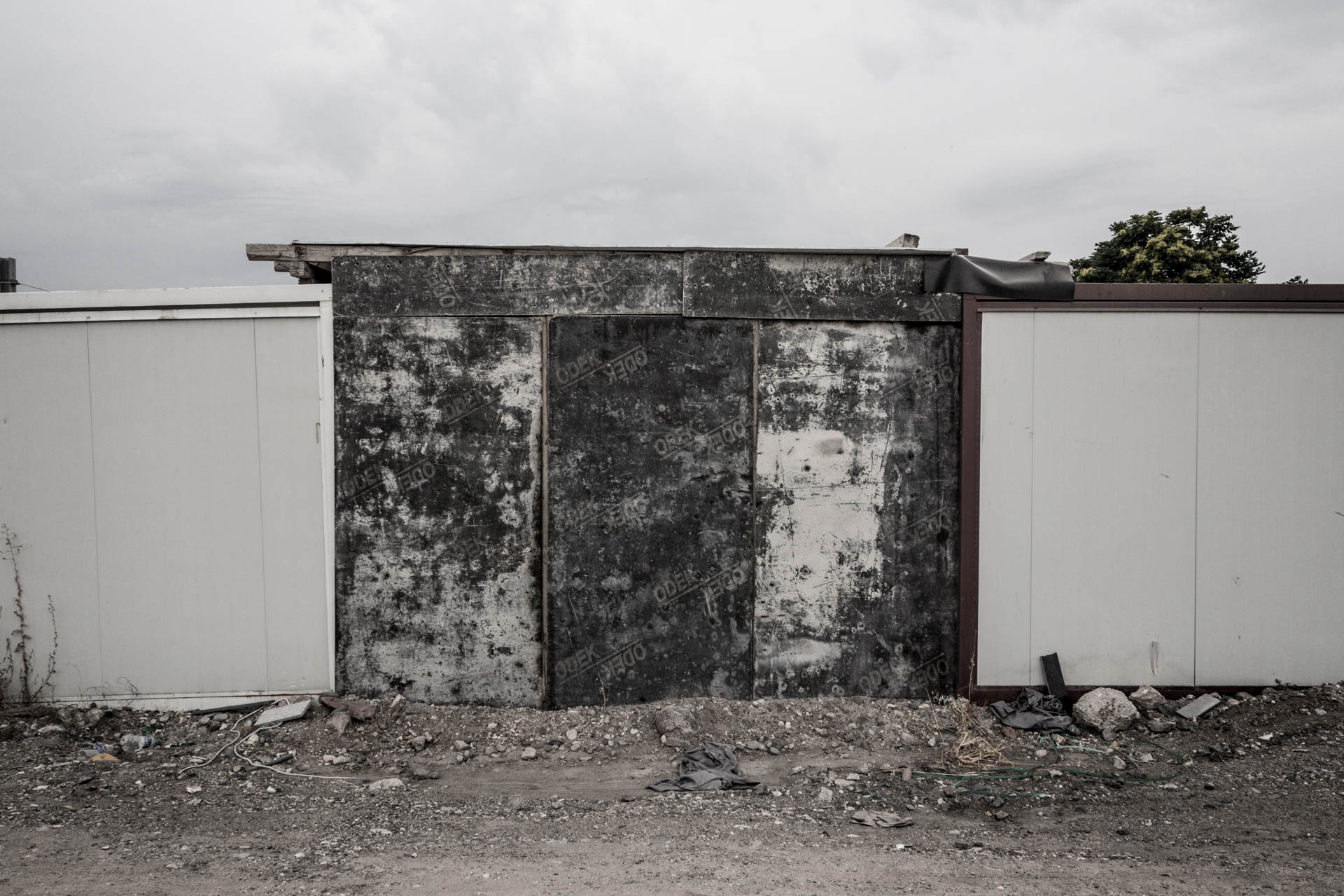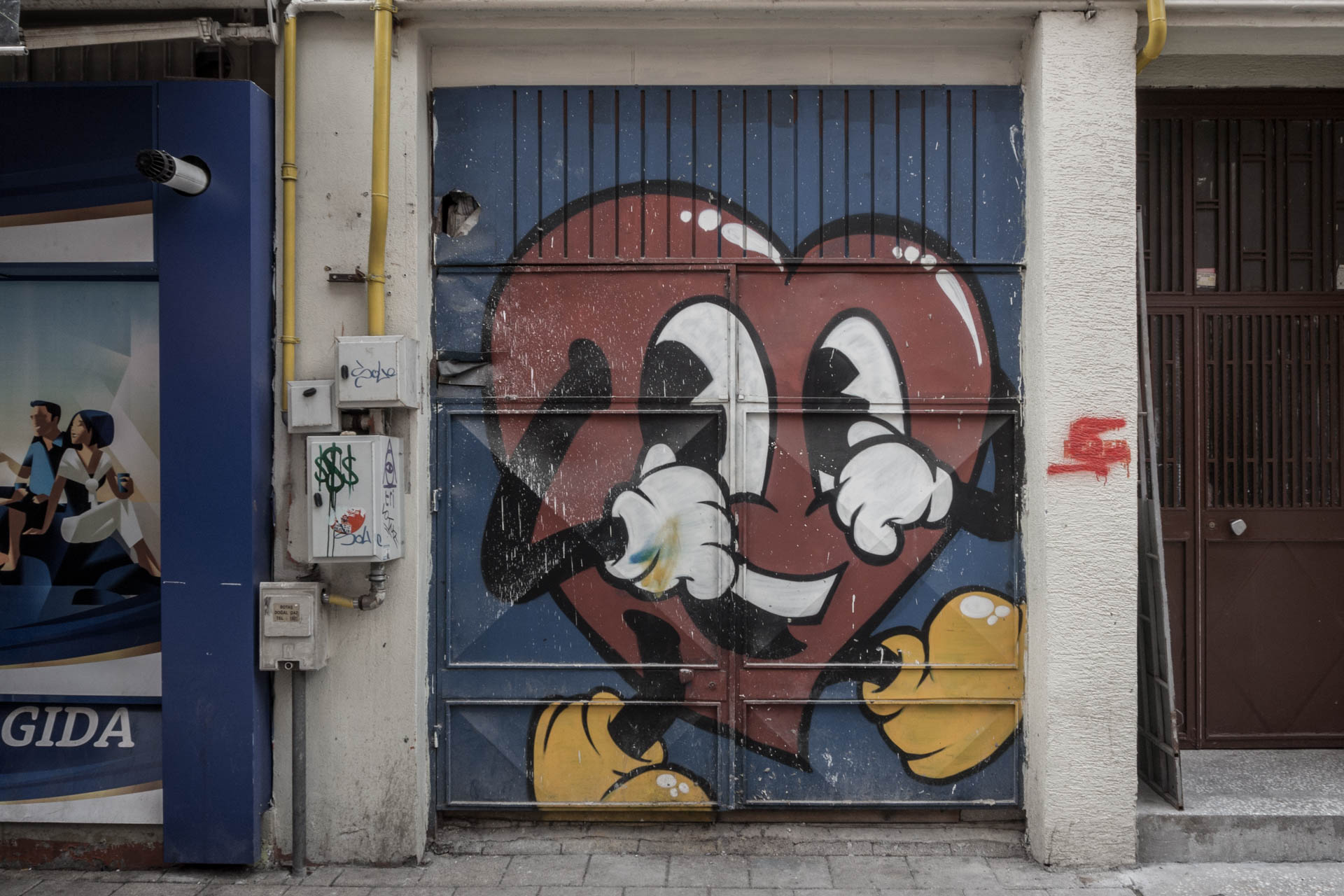New Normal
Photography Series
2014—On-Going
I began to develop my project almost five years ago (around 2014) with an instinct for documenting the new visual reality of Turkey by way of local urban exploration with photography. Over time the project has expanded and included three major cities of Turkey: İstanbul, İzmir and Eskişehir. My question concerns the common ground that makes these 3 cities of different lifestyles, climatic conditions, and economic realities still appear to be connected when it comes to their visual appearances.
I used a digital camera to archive all of this information of similarities to find a possibility of the new classification for a potential future.
When I went deeper into the subject, I realized that what was in evidence was not a local issue. The building and infrastructure endeavors that are based on neo-liberal politics could be observed in many countries all over the world, during the first decade of the 21st century. An IMF-led restructuring of Third World economies that began in the 1980s was increased to an urban construction boom at the start of the 21st century. (Davis, 2006: 11) What was happening all across the globe also took place in Turkey, transforming cities at a never seen before scale.














































According to Mike Davis, the cities of the future, rather than being made out of glass and steel as envisioned by earlier generations of urbanists, are instead largely constructed out of crude brick, straw, recycled plastic, cement blocks, and scrap wood. (Davis, 2006: 19) I was trying to build up that kind of perspective, which is related to the urban majority on that project. This approach closely corresponds to the premise in which I developed my project. In other words, based upon what I observe in my own immediate urban environment it comes closer to a future that will be mostly built out of second-grade material. In this sense I diverge from Davis’s observations that mostly center on research conducted in the continent of Africa: What I see here in Turkey is not so much an urban development that comes out of rejected or refuse material but rather one that manifests itself through an architectural mediocrity, second-rateness, and uniformity. I looked into the negative side of the city to slowly document the growth of, what on the one hand was a devastation that came out of the wanton destruction of the old, and on the other hand, the mediocrity that replaced it.
While we are looking at the shiny skyscrapers which certainly cannot be ignored as part of the urban renewal that Turkish cities are undergoing; right next to them, there is a second type of renewal, the one that I described above as one of mediocrity, second-rateness, and uniformity that is quickly spreading beyond its designated areas into the domain of the skyscrapers themselves.









































To take pictures of these in-between spaces was, of course, a conscious decision. However, looking back at the bulk of photographs that I took it also appears that I seem to have made a semi-conscious decision to shoot scenes that were absent of people, in order to expose the similarities of these places in an exaggerated form that would become more obvious through its lack of human bodies.
And also, it is somehow part of the geographical and visual anthropological method. The record of visual anthropology without a human object is a new thing and also relates itself to ‘deadpan photography’, an artistic style beginning from the 1950s, revolving around the creation of images that are entirely lacking in emotion. It is, therefore, a detached form of art, in which the artist merely captures something exactly as it is, even if it appears to be flat uninteresting at first glance. Although it may seem that capturing urban senses devoid of human inhabitants corresponds to the ideas behind deadpan photography, for me, there is nevertheless a problem in this association. Deadpan photography is a definition of an artistic style. The photography as an object and the position of the photographer relates itself to the tradition which is taking us back to the pictorialism, which is a photographic approach that emphasizes the charm of subject matter, tonality, and composition rather than the factual documentation. These pictures, such as Andreas Gursky’s work of the 1990s for example, manifest themselves as they have been produced for a museum wall because of their sizes and technical perfection. (Stallabrass, 2011: 95)
I could somehow never conceptualize my work on the wall of a museum, instead I am preparing a book for the project presentation. Lewis Hine of 1930s or Roger Fenton of the 1850s seems more convenient to my approach.
My photography series ‘New Normal’, discusses the urban transformation from the local perspective. These photos were taken in several cities of Turkey and consist of waste materials, construction sites, in-between spaces and awkward confrontations in streets. It is a practice of walking, and taking pictures as working in a laboratory while experiencing the suburbs, outskirts and the other sides of the city. I feel the need of telling the stories of unseen and make them exposed in the urban context.
As a result of policies of urban transformation laws in Turkey, a certain type of urban landscape is created. The project investigates the grammar of this new urban visual language. New Normal is an ironic name for the project, addresses the other side of normality, rather than the abnormal, but refers to the acquaintance for the new state of mind in the city, which is very hectic and cynical.
This acquaintance is evident in one of the earliest photographs from the project, which is ‘New Normal #582. A piece of a column found during the excavation of the ancient city of Agora. İzmir. (2014)’. The photograph is about looking for the parallel histories of urban excavation by spotting the encounter at a column piece found from an ancient city in a modern-day metropolitan city. The image consists of a piece in the middle, which is one of the primary forms in the ancient Greek construction system with the background of a slum neighborhood. The relationship between the spotted column and background is an analogy for the proximity of the archeological and the urban status.
‘New Normal #1552. Fencing of a skyscraper construction on Islam Karimov Street. İzmir. (2015)’ is an image from the project that may be a good example to show my strategy. It was taken during an urban exploration in İzmir and it shows the barely visible actual reality of the construction site when the vinyl print on top of it shows a 3D render of the building which is planned. It also shows the photographer’s position that is bumping into an obstacle and has a feeling of the excluded from the planned zone. It generates an impact of confusion about being in-between in the capitalist desire of possession and the actually being in that construction moment.































Another crucial image from the series is ‘New Normal #2755. A retaining wall with reinforced concrete panels used in the construction of intersections under Ankara Street. İzmir. (2017)’ This image shows a retaining wall pattern and one of the basic elements for the infrastructure. This pattern can be seen everywhere around Turkey in the last decade.
I practiced captioning as a strategy in my work. The photographs are titled with the meta information in terms of position of the object and its relations with the background. It is a counterfeit meta data, which includes information from various places, such as GPS coordinates, exact time information, and other EXIF data, which is taken from the camera. It is not the same captioning system for each image. Some images contain information of the background, while the other ones are only pointing out the characteristics of the object itself. By doing that, I am not only describing the image with a cold scientific tone, but I am trying to keep the definition as a note for myself.
I started the ‘New Normal’ project six years ago for a personal demand for an exploration of the urban environment from the eyes of inhabitants. Over time, the project evolved exponentially. It contains research on urban politics, visual anthropology, and politics of spatial relations.
My personal experience with my project was to build up a right perspective to the reality of the world I was living in, which is advertised otherwise. In the first place, I was thinking of practicing a plain urban exploration, but eventually, I realized it might be something bigger than I thought. It is already 5000 images in the archive and it is constantly growing as well as constructing itself in the context of different subjects around urban regeneration. From the recent political situations, I started to think these images might be a manifestation that announces the end of an era, which we are living in right now.
References:
- Davis, M. (2007). Planet of slums. London: Verso, 11-19. Stallabrass, J. (2004).
- Art incorporated: the story of contemporary art. Oxford: Oxford University Press, 94-95.



































































